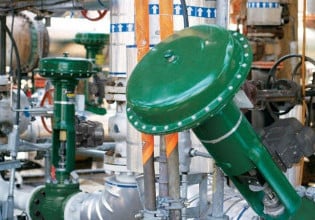CIPS 2022 - 12th International Conference on Integrated Power Electronics Systems
The International Conference on Integrated Power Electronics Systems (CIPS) focuses on the technological background, starting with the components to be integrated (such as passives and sensors), but with the largest share in the conference addressing power semiconductor chips made out of silicon (Si), or more increasingly, wide bandgap materials like silicon carbide (SiC) and gallium nitride (GaN).
All of these components need to be packaged, where materials and processes play an important role and define the resulting circuit elements including parasitics such as stray inductances. The type of package usually determines the thermal behavior of the components as well as their reliability. Recent results reported at the 12th CIPS in 2022 refer to various approaches of optimization such as embedding the chips in printed circuit boards and providing double-sided cooling, which ensures a high level of reliability even under demanding operational conditions in modern applications.

Image used courtesy of VDE
The technology development trend of achieving an increase in efficiency ratings along with significant reduction in system size with higher reliability is only possible by developing an elevated level of system integration. The ultrafast switching devices based on wide bandgap material further challenge technology barriers in terms of power density, efficiency, and operating temperature. Along with this movement, we are faced with new challenges such as how to manage all the distributed parasitic capacitances and inductances. On the other hand, new interfacing materials are needed to improve the heat transfer and meet the requirements for the coefficient of thermal expansion (CTE).
Many questions related to the power electronic development trends and technology road mapping related to higher power densities, higher efficiency ratings, improved reliability and new design rules for packaging and 3D system integration were presented and discussed during the conference.
Furthermore, there were many contributions regarding the related test methods. Whilst these are mature and standardized with respect to silicon devices and while impressive results could be reported from wide bandgap devices, ongoing research is still required to understand wear-out and failure mechanisms well enough to detect and possibly predict them, and ultimately, eliminate them to achieve even more reliable components and consequently, circuits and systems. Exemplary integrated power electronic systems were reported and electromagnetic compatibility (EMC) was addressed. The latter is critical considering the steep voltage and current slopes occurring during switching actions of power semiconductors, where a proper power electronic design may significantly help to achieve the indispensable EMC at the system level. Beyond these technical aspects, the strong participation of industry in the conference ensured that cost was appropriately considered. A higher investment in power semiconductor components and their integration can lead to economic benefits at the system level where power electronics enable further optimization and new functionality.
The CIPS conference was organized by VDE-ETG in cooperation with ECPE European Center for Power Electronics. The 12th CIPS took place from March 15th to 17th, 2022 as a hybrid conference with two-thirds of the attendees participating in person in Berlin and highly appreciating the opportunity to finally exchange directly again. The conference proceedings including keynotes, and invited and submitted papers are available from VDE-Verlag (ETG-Fachbericht 165) and in IEEE Xplore. The next CIPS is scheduled for March 12th to 14th, 2024 in Munich with the deadline to submit papers in summer 2023; current information will be provided at www.cips.eu.
Featured image used courtesy of VDE
This article originally appeared in Bodo’s Power Systems magazine.






